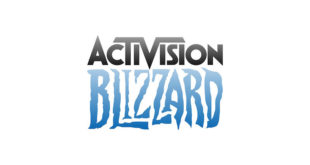In part one of Develop’s interview with Robomodo’s Patrick Dwyer and David Michicich, the issue of Microsoft’s Natal was raised.
Surely if a studio wants to build a game around motion tracking, Microsoft’s motion-reading device must have been considered? The duo are adamant, however, that a skateboard peripheral for a skateboard game makes more sense, regardless of price tag and dev times.
And below, Michicich and Dwyer reveal just how that board was assembled, revealing a passion for peripheral design that most developers rarely have the chance to exhibit.
Robomodo is in a fairly unique position; your first project was to build both a peripheral and video game at the same time. Tell us more about how Robomodo handled working on both simultaneously.
Michicich: It was pretty ballsy. What we really wanted to make was a new experience, and a lot of our workforce came from the imaginative team behind EA Chicago’s Fight Night Round 3 – some also worked on Def Jam Icon – and they already had a good track record of changing the experience through play mechanics.
Are you referring to the Total Punch Control?
Michicich: Exactly; it’s kind of that approach to game design that Robomodo adheres to.
When we got in bed with Activision, we actually didn’t know what project we were going to work on, but Activision understood where our passion lied, and our ideas of innovating through control and play mechanics.
A lot of developers like to say they’re being revolutionary – in this industry we like to throw down a lot of buzzwords. It’s crucial for us to deliver on what we promise. We believe the proof is in the pudding, not on the back of the box.
Going back to the project itself, how did how Robomodo manage building both a board and a game simultaneously?
Dwyer: At the very start of the project we were basically putting blank decks on the ground to get a feel for how this would work, while at the same time we were watching a lot of skate videos and tried to mimic their movement on the board to see how it would work out.
From there we decided what kind of play mechanics would work well with the design of this board. We tried everything, from putting arcade buttons on the top of it, to using trackballs on it – essentially we were trying to see which things were fun to perform while standing up.
At the same time, we had to think if all the gestures we were looking at could be performed by pretty much everyone. It was not our goal for Ride to be a game just for hardcore skaters, not at all. We want everyone to feel like a professional skater. Our design goal was that all a player needed to do, in order to understand how our game is controlled, was watch someone skate.
Usually when designing software, developers have a fixed controller to base their project on. Face buttons and analogues and so on. Your team, however, had the opposite. You could build a peripheral around a game. What sort of opportunities came from this?
Michicich: It certainly gave us more options. Instead of think about what buttons could trigger actions, we actually started by looking at which gestures worked and which didn’t. With the ones that worked, we looked at what moves in the game they worked best with. So it gave us a unique opportunity in that sense.
Many, if not all, controllers are finalised after quite literally hundreds of prototypes are made and altered and rejected and returned to. Designing something as permanent and future-proof as a peripheral is seen by many as a giant task.
Dwyer: Then again, even in software development you need to prototype everything. You need to see how the game works when the character is moving as fast as possible, or as slow as possible, just to see how that works.
With our board we really took the same approach, in that sense. We looked at everything, even the bottom curve on the board; how much it tilts, how much it lifts. All these small things are huge factors in our game.
We worked with a company based locally that design prototype products for Motorola. We spoke to them and they were able to carve holes into the bases of each board – actually I can’t even think of the number of iterations we had of that…
We have, like, a graveyard of skateboard prototypes here.
We went through lots and lots of different boards before getting the final product. Many aspects of the board’s design that we had to think about, just to ensure it works well, won’t often get noticed. That form factor on the bottom of the board has gone through so many different iterations to ensure it allows for the right gestures and movement on a number of different floor surfaces.
We really were shooting for a game where the demographic is really wide; certainly wider than anything I’ve ever worked on in my career. We went out to a lot of different companies to just to address how the board works.
We’re really aware of how crucial the board is to the critical success of the game. When people found out we were working on the Tony Hawk series – just before we announced we were making a board for it – there was a lot of questions about Tony Hawk against Skate, but the truth of the matter is that we’re not really competing with any skater game as much as we’re trying to sell a new experience altogether.
And we’ve also had the pros get on it as well, and give feedback for tweaks and alterations.
IN PICTURES: HOW THE RIDE TEAM BUILT A BOARD:

 MCV/DEVELOP News, events, research and jobs from the games industry
MCV/DEVELOP News, events, research and jobs from the games industry



